Summertime on the Farm
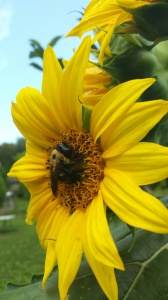 Kids are out of school, pools are open, ice cream shops are thriving — ah, the month of June. When I lived in the city, June meant iced coffee dates with friends, weekend trips to the lake, and bluegrass concerts at my favorite venues. Living on a farm, I am learning that June is also a great month for productivity and new growth! Coffee dates are replaced by farm meetings over breakfast, lake trips have been trumped by farmers’ markets, and as far as bluegrass goes — well, there’s always time for a little string music, even if it’s playing from phone speakers while I’m washing and market-readying our crops. This is not to say that life here is any less enjoyable than life in the city — quite the contrary! Every day on the farm is packed with opportunity and adventure. This week, for example, we are hosting 6 children each morning and afternoon for Camp Wolfscratch. So far, we’ve discussed soil health, mushroom life cycles, and the importance of various other elements in our system. The kids have planted squash, played in the creek, tasted farm-fresh goodies, and witnessed animal life most of them never had before experienced. All that before 2 pm! Once the kiddos leave, the work day continues on the farm, with harvesting, pest patrol, market evaluation, weeding, planning, digging, and so much more. The farmers work well into the evening, often after dinner, until a good night’s sleep has been well-earned. The work is hard, in that it is physically demanding and mentally taxing. There’s not a lot of “time off”. We don’t have friends over for dinner regularly, and we rarely go to their houses either. No one is making enough money to buy a new car, build a hot tub on the porch, or install a state-of-the-art sound system throughout the house. This is not a place for anyone looking to turn over a quick buck or sit around and wait for something to happen. We are doers, shakers, and makers.
Kids are out of school, pools are open, ice cream shops are thriving — ah, the month of June. When I lived in the city, June meant iced coffee dates with friends, weekend trips to the lake, and bluegrass concerts at my favorite venues. Living on a farm, I am learning that June is also a great month for productivity and new growth! Coffee dates are replaced by farm meetings over breakfast, lake trips have been trumped by farmers’ markets, and as far as bluegrass goes — well, there’s always time for a little string music, even if it’s playing from phone speakers while I’m washing and market-readying our crops. This is not to say that life here is any less enjoyable than life in the city — quite the contrary! Every day on the farm is packed with opportunity and adventure. This week, for example, we are hosting 6 children each morning and afternoon for Camp Wolfscratch. So far, we’ve discussed soil health, mushroom life cycles, and the importance of various other elements in our system. The kids have planted squash, played in the creek, tasted farm-fresh goodies, and witnessed animal life most of them never had before experienced. All that before 2 pm! Once the kiddos leave, the work day continues on the farm, with harvesting, pest patrol, market evaluation, weeding, planning, digging, and so much more. The farmers work well into the evening, often after dinner, until a good night’s sleep has been well-earned. The work is hard, in that it is physically demanding and mentally taxing. There’s not a lot of “time off”. We don’t have friends over for dinner regularly, and we rarely go to their houses either. No one is making enough money to buy a new car, build a hot tub on the porch, or install a state-of-the-art sound system throughout the house. This is not a place for anyone looking to turn over a quick buck or sit around and wait for something to happen. We are doers, shakers, and makers.
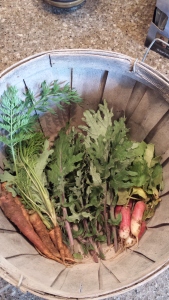 That being said, every day, I wake up happy to be here. Something magical happens when you turn your focus away from the TV and toward the soil. A physiological connection exists between a tree and the child leaning against it. The plants and their farmers coexist in an integrated system, whose presence pervades every version of life on this planet. When my back feels sore from a morning of harvesting vegetables, or my hands have blisters from hoeing new crop rows, the pain sends a signal to my soul, which tells me I’ve labored to share my connection to Nature with others. The vegetables we grow are sold at markets and restaurants in our community. Everything that comes out of the ground here either nourishes members of our community directly, or it returns to the soil as compost and nourishes the new plants, which will in turn become nourishment for one of the above.
That being said, every day, I wake up happy to be here. Something magical happens when you turn your focus away from the TV and toward the soil. A physiological connection exists between a tree and the child leaning against it. The plants and their farmers coexist in an integrated system, whose presence pervades every version of life on this planet. When my back feels sore from a morning of harvesting vegetables, or my hands have blisters from hoeing new crop rows, the pain sends a signal to my soul, which tells me I’ve labored to share my connection to Nature with others. The vegetables we grow are sold at markets and restaurants in our community. Everything that comes out of the ground here either nourishes members of our community directly, or it returns to the soil as compost and nourishes the new plants, which will in turn become nourishment for one of the above.
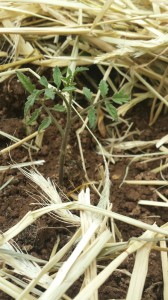 Now, as gratifying as it may feel to know that I have contributed to the nourishment of my community, sore muscles are still sore, and blistered hands still sting. No amount of heartfelt gratitude will change the signals my aching body sends to my brain — and nor do I want it to. Pain in the body means healing is needed, and without enough rest to facilitate that healing, no farmer’s body will last for very long. So, the question arises, “How can I continue this work, and maintain a healthy body?” The way I understand things, there are a couple different options.
Now, as gratifying as it may feel to know that I have contributed to the nourishment of my community, sore muscles are still sore, and blistered hands still sting. No amount of heartfelt gratitude will change the signals my aching body sends to my brain — and nor do I want it to. Pain in the body means healing is needed, and without enough rest to facilitate that healing, no farmer’s body will last for very long. So, the question arises, “How can I continue this work, and maintain a healthy body?” The way I understand things, there are a couple different options.
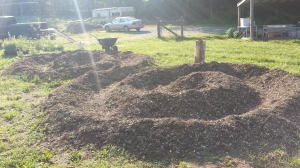 We can build a team of hard-working Nature enthusiasts, and we can take turns laboring in different parts of the field. Maybe each farmer works one or two days in a row, and takes a day or a half-day off to rest. This way, not only do we all have time to rest and recuperate from the daily tasks, but we also have time to reflect on our work and prepare for the next job. This way requires an accumulation of folks with mostly agreed-upon priorities and never-ending clear communication. It is the choice made by many farms, all over the world, and will probably continue to exist everywhere.
We can build a team of hard-working Nature enthusiasts, and we can take turns laboring in different parts of the field. Maybe each farmer works one or two days in a row, and takes a day or a half-day off to rest. This way, not only do we all have time to rest and recuperate from the daily tasks, but we also have time to reflect on our work and prepare for the next job. This way requires an accumulation of folks with mostly agreed-upon priorities and never-ending clear communication. It is the choice made by many farms, all over the world, and will probably continue to exist everywhere.
Another option is to build a system that can effectively take care of itself. This is the way of permaculture. Permaculture is a design system, which means it is the result of creative problem-solving methods that altogether increase the stability and regeneration of land. Traditional farming involves designating certain plots of land for certain crops, using machinery and tools to landscape a field into a crop factory. Many farmers find this method effective and fruitful (no pun intended…), and generations upon generations of landowners have seen success with such use of their land. However, since the 70s, the term Permaculture has arisen and begun spreading its seed (pun most certainly intended) throughout the world, and it [re]introduces folks to Nature-symbiotic methods of land management. Permaculture does not just set forth food-growing plans; it is an all-encompassing lifestyle, with innovative ways to attain hot water without electricity, clean sewage and waste out of our systems while nourishing the soil, efficiently feed animals while simultaneously preparing the ground for crop growth, to name but a few concepts. These permaculture practices go beyond productivity, efficiency, and sustainability — they are regenerative.
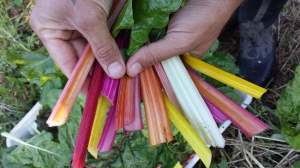 Traditional farming systems have proven productive, through repetitive planting, fertilizing, and harvesting methods. They are made more and more efficient by various worker schedules, climate and weather adaptations, and by use of stronger and bigger machinery. They might even be sustainable, in that the produce sells well enough to pay for the workers and equipment. However, eventually, the same plots where the same crops are sowed and reaped season after season, year after year, will start to grow plants that are nutrient-deficient, lacking in taste and color, and eventually the soil won’t allow for more growth. Unhealthy soil attracts all sorts of insect life, which is counteracted by copious pesticide application, which results in furthering the plants from healthy, natural content. This is why the regenerative results of permaculture practices are so crucial to longevity. Not only do they sustain themselves with less maintenance and interference from humans, but they regenerate the whole system involved, so they can continue to support healthy, happy life.
Traditional farming systems have proven productive, through repetitive planting, fertilizing, and harvesting methods. They are made more and more efficient by various worker schedules, climate and weather adaptations, and by use of stronger and bigger machinery. They might even be sustainable, in that the produce sells well enough to pay for the workers and equipment. However, eventually, the same plots where the same crops are sowed and reaped season after season, year after year, will start to grow plants that are nutrient-deficient, lacking in taste and color, and eventually the soil won’t allow for more growth. Unhealthy soil attracts all sorts of insect life, which is counteracted by copious pesticide application, which results in furthering the plants from healthy, natural content. This is why the regenerative results of permaculture practices are so crucial to longevity. Not only do they sustain themselves with less maintenance and interference from humans, but they regenerate the whole system involved, so they can continue to support healthy, happy life.
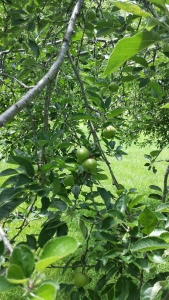 At Wolfscratch Farm, we are amidst installations and reconfigurations of the land, which are essentially converting the once-traditional farm space into a permaculture system. This is an incredibly educational experience for all involved, and we would love to share what we’re doing with our community, by means of workshops, informative blog posts and e-mails, and a few events we’re planning for the rest of the year. Sign up for our e-mail list to stay informed of our upcoming efforts! To sign up, send an e-mail to us at wolfscratchfarm@gmail.com , and feel free to include any questions you have, ideas you want to share, perhaps a way you want to be involved, or just simply let us know you want to be included in our e-mails. Our goal is to spread knowledge and empower ourselves and our community to take charge over our health and the way we live together and with the earth.
At Wolfscratch Farm, we are amidst installations and reconfigurations of the land, which are essentially converting the once-traditional farm space into a permaculture system. This is an incredibly educational experience for all involved, and we would love to share what we’re doing with our community, by means of workshops, informative blog posts and e-mails, and a few events we’re planning for the rest of the year. Sign up for our e-mail list to stay informed of our upcoming efforts! To sign up, send an e-mail to us at wolfscratchfarm@gmail.com , and feel free to include any questions you have, ideas you want to share, perhaps a way you want to be involved, or just simply let us know you want to be included in our e-mails. Our goal is to spread knowledge and empower ourselves and our community to take charge over our health and the way we live together and with the earth.
For anyone who is interested in reading more about permaculture, here is a list of highly recommended and commonly referenced works to get you started:
Gaia’s Garden by Toby Hemenway
Introduction to Permaculture by Bill Mollison
Permaculture: A Designer’s Manual by Bill Mollison and David Holmgren
The One Straw Revolution by Masanobu Fukuoka
Edible Forest Gardens by Dave Jacke

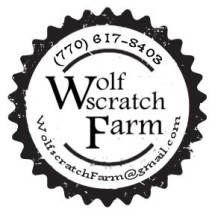
Great letter thanks.
Have a blessed day!